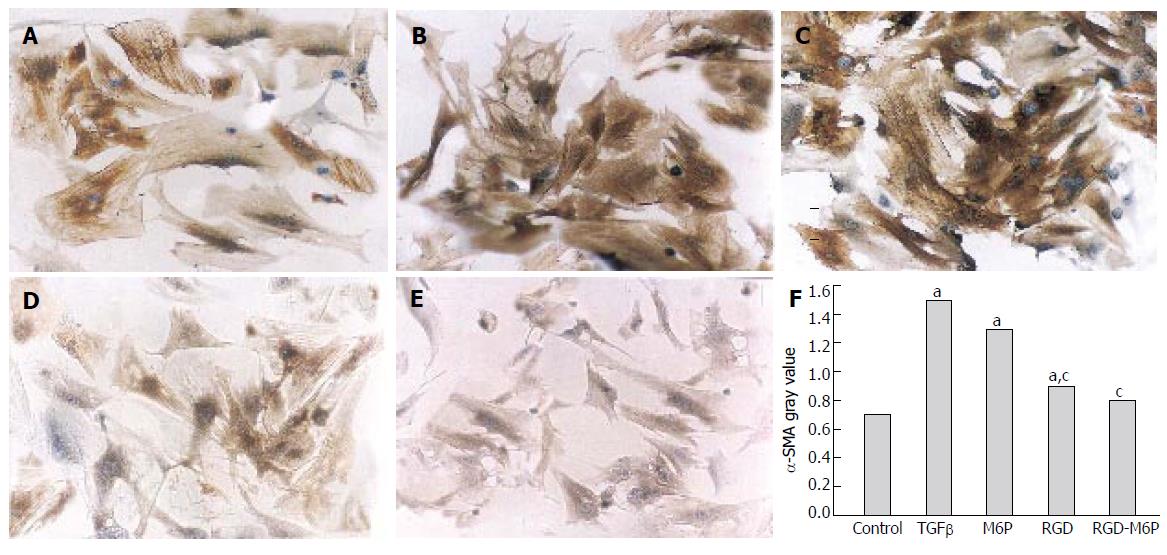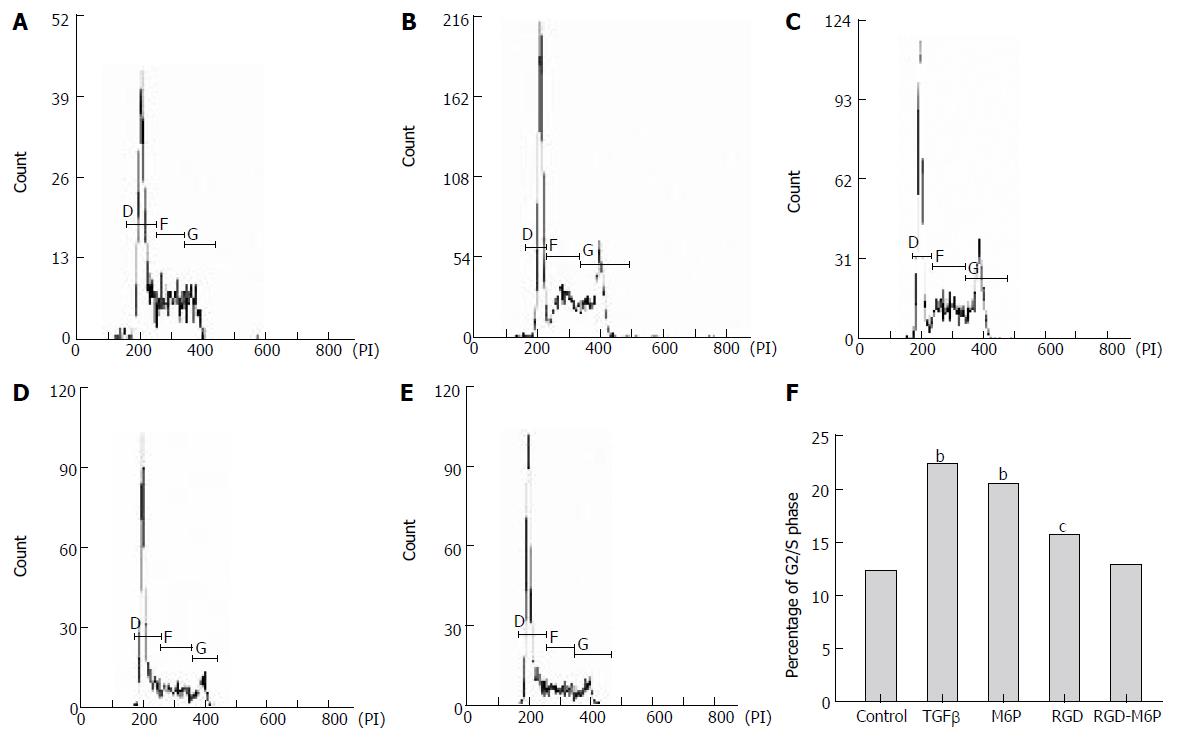Copyright
©2006 Baishideng Publishing Group Co.
World J Gastroenterol. Feb 28, 2006; 12(8): 1303-1307
Published online Feb 28, 2006. doi: 10.3748/wjg.v12.i8.1303
Published online Feb 28, 2006. doi: 10.3748/wjg.v12.i8.1303
Figure 1 Small and round HSCs in the presence of vitamin-A droplets in cytoplasm (A) and spindle-like or asteroid membranous processes in HSCs (B).
Figure 2 Immunocytochemical analysis of HSCs after cultured for 5 d (A), after treatment with TGF β1 (B) and M6P (C), weak positivity of α-SMA RGD (D) and RGD-M6P (E), and elevated expression of α-SMA (F) in HSCs.
aP < 0.05 vs control groups; cP < 0.05 vs TGF β1.
Figure 3 Flow cytometry analysis of cell cycle.
PI histogram shows the details of cell cycle, in which the gates of D, F and G represent the G0/G1, S and G2/M phases, respectively, shown in corresponding figure.A: Proliferation of primary cultured HSCs; B: Increased proliferation of primary cultured HSCs in the presence of TGFβ1; C: Increased proliferation of primary cultured HSCs in the presence of M6P; D and E: Enlarged fraction of G2/M phase cells after treatment with RGD and RGD-M6P; F: Distribution of cell cycle phases was calculated using Multicycle I.O. bP < 0.01 vs control, RGD and RGD-M6P groups; cP < 0.05 vs control.
- Citation: Wang LS, Chen YW, Li DG, Lu HM. Arg-gly-asp-mannose-6-phosphate inhibits activation and proliferation of hepatic stellate cells in vitro. World J Gastroenterol 2006; 12(8): 1303-1307
- URL: https://www.wjgnet.com/1007-9327/full/v12/i8/1303.htm
- DOI: https://dx.doi.org/10.3748/wjg.v12.i8.1303















